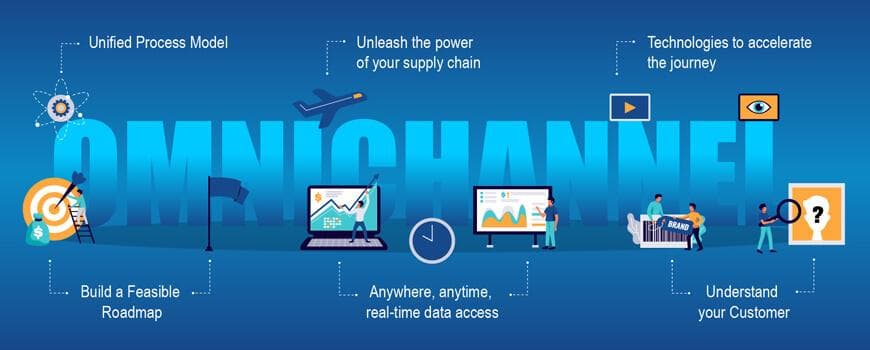Realizing business value from your transformation initiatives
04 April 2022


Sandeep Kumar
VP - Business Consulting & Value RealizationSandeep Kumar is Vice President, Business Consulting & Value Realization at Applexus. With over 25 years of experience in consumer industries and consulting, Sandeep owns a...
Today, more so than ever before, companies are expecting digital transformation initiatives to deliver better shareholder value through operational efficiencies and providing a superior experience to their customers, partners and employees. Organizations have invested significantly to design, build and operate core solutions such as ERP-based systems to support and drive the company’s operations. However, research by industry analysts suggests that this investment has typically not provided the returns expected by company executives. Moreover, companies are finding it increasingly difficult to maintain alignment between core systems and evolving business strategies.
While this challenge may not be new to the business world, rapid change in the business environment coupled with the sense of urgency to optimize investments is causing company executives to seek and demand measurable business value from their investments across all their digital transformation initiatives.
On average, large projects run 45% over budget and 7% over time, while delivering 56% less value than predicted - McKinsey 1
According to an Everest Group study 2 a whopping 78% of enterprises failed to meet their business objectives and acquire the desired results from their investment. Recognizing some of the pitfalls and reasons behind this can help ensure that corrective actions are taken upfront to make certain that transformation initiatives deliver on promised business value.
Top reasons why businesses aren’t realizing any value
Quite often organizations lack a clear definition of business value, ways to link business value to detailed project work, and a governance mechanism to have clear ownership around business value.
70% of complex, large-scale digital transformation, change programs don’t reach their stated goals – McKinsey 3
In our experience, here are some key reasons why businesses fail to realize full value:

1) Business case doesn’t exist or not well understood - Key decision-makers need to establish a case for why a transformation initiative is needed and in our experience this step is often either overlooked or there is a lack of rigor around it. A good business case should include imperative for change, options considered for the required change, alignment with business strategy, cost, benefits, risk profile of different options considered and finally a recommendation for the suggested option. Business case also identifies where value comes from and how the same gets created. A good business case comprises of
- Clear identification of business needs, pain points, objectives, and value creation opportunities
- Identification of potential initiatives to address pain points and/or gaps, then align them with the organization’s strategic business plan
- Definition of capabilities that are required to address these pain points
- Comparison against industry benchmarks and other available options to identify the range of benefits (financial and non-financial)
- Identify associated costs, inherent risks, governance, and timeframe to completion
- Successful teams have avoided cost overruns and value loss by building a detailed business case and ensuring that different stakeholders in the organization have reviewed and aligned around this business case.
2) Overlapping value across programs - Very often, there are several programs which impact the same value drivers, for example, there could be multiple initiatives in an organization which would be trying to reduce the overall inventory levels. In situations like these, it is difficult to understand the kind of benefits that each initiative should be delivering.
In such cases, the pragmatic approach is to document principal and secondary benefits from any given program and have alignment around key metrics that each program will address. For example, two programs might be designed to reduce the overall inventory, but one initiative can reduce the finished goods inventory while the other initiative could be around reducing Work in Processing inventory. It is critical to have key metrics, their baseline values and overall governance process around measuring these metrics and accountability for the same.
3) Stakeholders are not aligned and lack of accountability – spend enough time in identifying key stakeholders for the transformation initiative and there is often a lack of understanding around who owns the capabilities that will lead to value creation opportunities. This often leads to conflicts, lack of accountability, and confusion during the project execution stage
Top-performing projects, involve key stakeholders and establish a clear view of the initiative’s strategic value. High-performing project teams improve the ways in which they manage internal and external stakeholders, such as business executives, vendors, and partners. It also ensures that there is a clear understanding of who owns what and what is expected of them.
This way, project leaders can continually engage with all the business unit and functional heads to ensure a proper and cohesive alignment between business needs and the new digital solutions being developed. Here are a few key tenets to keep in mind to avoid any value leakage:
- Define proper accountability around who owns and oversees what in the project
- Define roles and responsibilities around the measurement phase
- Define roles and responsibilities around the ongoing review and management processes
4) Value drivers not linked to design decisions - Often, value doesn’t form the basis for taking program related decisions. Value-based decision-making ensures that every key person in the organization is fully aware about how a choice was made, why it was made, and how it reflects in the overall mission of the company.
It is critical to have your design decisions align with and be clearly linked to the value drivers established as part of the business case.
Key steps that need to be taken to ensure value drives solution design:
- Break down each value driver to a set of capabilities
- Ensure that the detailed design addresses these capabilities. Any deviation from these capabilities needs to be evaluated and justified with respect to the business value. Adjustments to the business case may be needed.
- Prioritize decisions based on the ones that provide more business value and other criteria like ease of implementation, complexity, etc.
5) Failure to evaluate and measure value – Many organizations do not have a mechanism in place to measure business benefits delivered by a transformation initiative. Quite often, the organizations develop a business case and go through the implementation of a program and at the end of the program they realize that program has not delivered the expected value.
Key steps that need to be followed to measure and track value:
- Define how value will be measured. It could be a set of metrics and frequency at which it will be measured
- Align on the metrics related to program execution including leading and lagging business metrics
- Capture the value of these metrics and compare against the target value
- Report the value realized so far in a quantitative and qualitative format
- Perform extensive analysis and identify factors impacting KPIs leading to reduced benefits.
- Define corrective actions and identify new initiatives or tweaks to the existing capabilities
- Assign responsibilities for these actions
How Applexus can help realize value from transformation initiatives?
Applexus RunningStart methodology for business transformation is designed to not only deliver the programs on time and within budget but most importantly, it delivers the promised business value.

Applexus follows a meticulous methodology that spans across the entire lifecycle of a program and aligns business strategy, value drivers, key capabilities and the governance structure needed to assure value realization.
Applexus uses a framework called Value Assurance Framework (VAF), as part of its transformation methodology which helps to discover, design, and monitor the business value for any given transformation initiative.
Value Assurance Framework (VAF)
As research by leading analysts have shown that Value Leakage happens at every stage of the program. Our approach is designed to maximize value realization at each stage of the transformation program.

Source – Michael Bucy, Bill Schaninger, Kate VanAkin, Brooke Weddle, Dec 2021. Losing from day one: Why even successful transformations fall short
Value Assurance Framework (VAF) is split into three different phases, namely Discover, Design, and Monitor, and each of these phases are designed to address different set of activities which need to be performed to realize business value from the transformation initiatives. Each phase has a set of deliverables and templates designed to aid the business value related activities. They are integrated with other work streams of the programs. This helps all the workstreams to work on capabilities that have a clear line of sight to business value and fosters cross-team collaboration needed to meet the objectives of the program.
Discovery Phase – The objective of this phase is to identify capabilities that will deliver business value. You would need to focus on objectives, business case, key value drivers, and what needs to go or be replaced to bring about concrete transformative value.
Design Phase –The design phase ensures your solutions are tied to the key value drivers – they revolve around the benefits you hope to achieve from the transformation initiative. In this phase, you’d ensure that the solution is value-focused and take measures to embed the value within the business strategy. This approach guides the design of the solution (process, people, and technology) to achieve an incremental and measurable improvement in process metrics. Additionally, by taking a cross-functional business process view, it is also able to identify the capabilities where multiple process teams need to collaborate to drive operational efficiency. The design of the technology component of the solution, whether it is an ERP system or a custom developed system, is influenced by the structure of business processes as well as targeted process objectives and metrics.
Monitor phase – Once the value drivers are identified and a business case is established, there must be a uniform process, frequency and mechanism of tracking benefits from the given transformation initiative
20% of value loss occurs after implementation, once the initiatives have been fully executed – McKinsey 4
Monitor the initiative to see if it bears fruits in accordance with your expectations and in case of any deviations what corrective actions need to be taken. To pull this off, organizations need to start capturing, measuring, and reporting the bare minimum and maximum values they get from the program as well as have a well-defined governance process around the different business value components.
Value Assurance Framework has a set of tools, templates, and accelerators to guide our clients on maximizing the value realization from business transformation initiatives.
Conclusion
For many businesses, the success of a transformation initiative remains elusive. Even a successful organizational transformation fails to deliver optimum value consistently. Much of the value loss occurs during and after implementation for many businesses. A lot of it can be attributed to a lack of proper structure to identify value drivers, linking these to detailed design and having a process in place to monitor and track realized business value.
A value-based initiative approach through a Value Assurance Framework (VAF) ensures you have the right structure and governance in place to realize promised business value from your transformation initiatives. All of us at Applexus realize the importance of digital transformation initiatives for our clients and the rigor needed to realize business value from these initiatives. Our goal is to ensure that our clients benefit from our experience and can transform their business capabilities enabled by technology while fully realizing business value.
1 Bloch M, Blumberg S, and Laartz J, October 1, 2012. Delivering large-scale IT projects on time, on budget, and on value, McKinsey. https://www.mckinsey.com/capabilities/mckinsey-digital/our-insights/delivering-large-scale-it-projects-on-time-on-budget-and-on-value
2 Bendor-Samuel P, August 27, 2019, Why Digital Transformations Fail: 3 Exhausting Reasons, Everest Group. https://www.mckinsey.com/capabilities/mckinsey-digital/our-insights/delivering-large-scale-it-projects-on-time-on-budget-and-on-value
3 Bucy M, Schaninger B, VanAkin K, and Weddle B, December 7, 2021. Losing from day one: Why even successful transformations fall short, McKinsey. https://www.mckinsey.com/capabilities/people-and-organizational-performance/our-insights/successful-transformations
4 Bucy M, Schaninger B, VanAkin K, and Weddle B, December 7, 2021. Losing from day one: Why even successful transformations fall short, McKinsey. https://www.mckinsey.com/capabilities/people-and-organizational-performance/our-insights/successful-transformations












